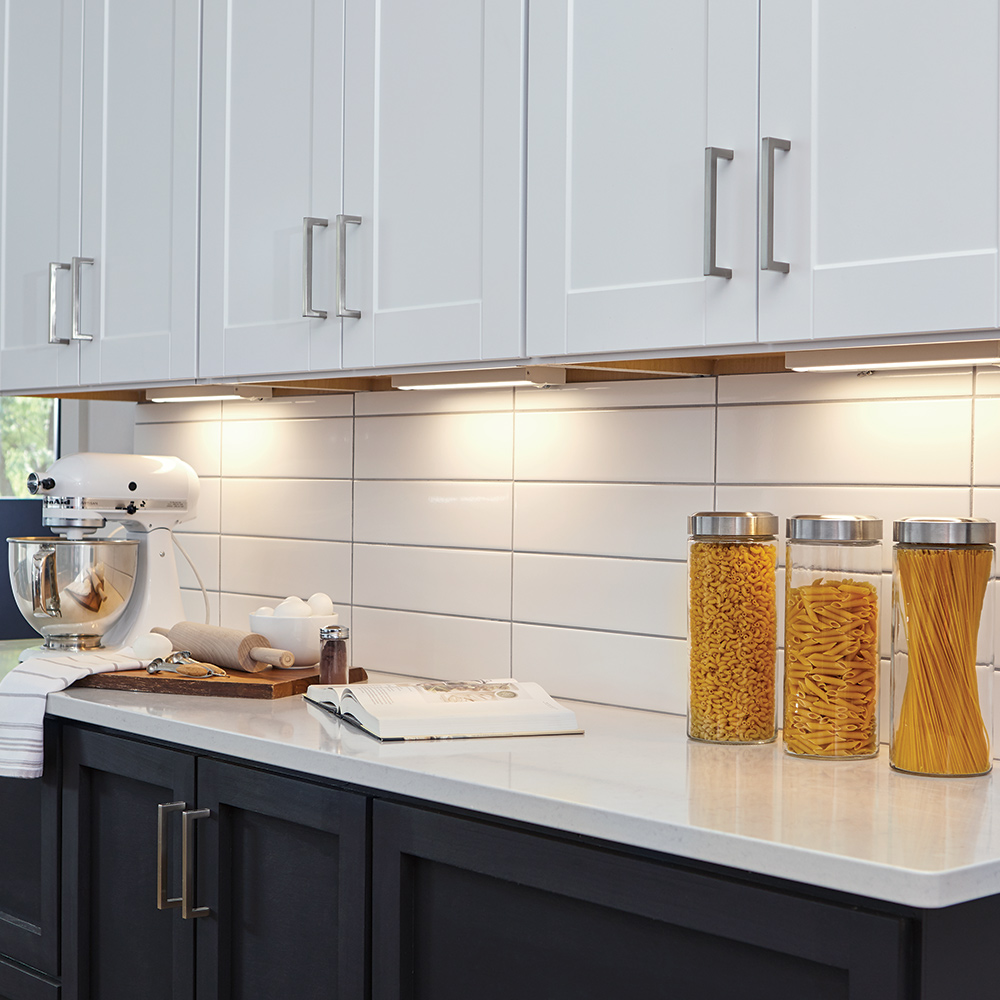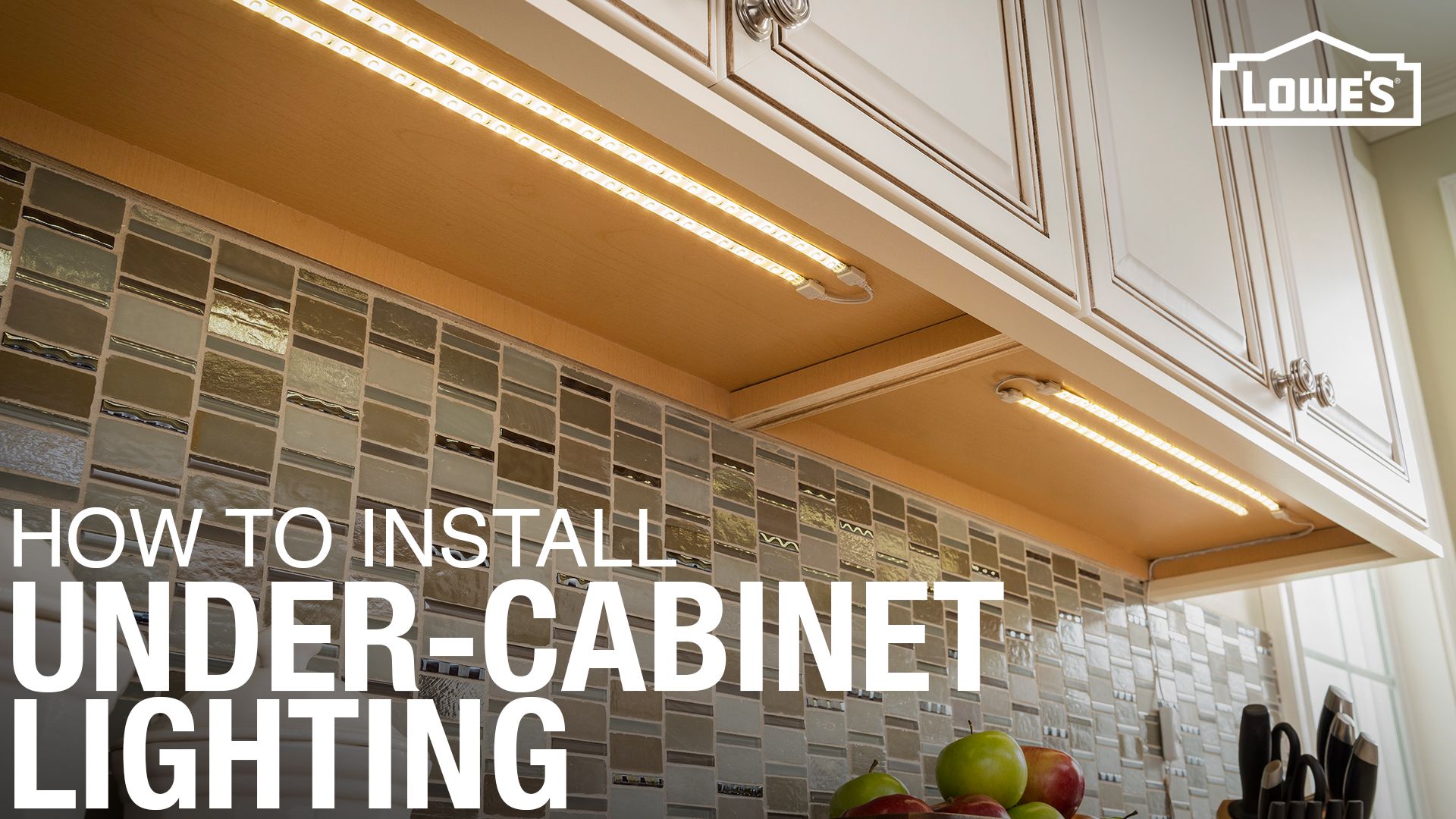Recessed Lighting Benefits in Kitchen Cabinets: Recessed Lighting Over Kitchen Cabinets

Recessed lighting, also known as can lighting, is a popular choice for illuminating kitchen cabinets. Its discreet design seamlessly integrates with the ceiling, providing a clean and modern aesthetic while offering several practical advantages.
Improved Task Lighting
Recessed lighting significantly enhances task lighting in the kitchen, making it easier to perform various tasks, such as food preparation, cleaning, and storage. The direct and focused light emitted from recessed fixtures illuminates the work area effectively, reducing shadows and improving visibility. This is particularly helpful when working with intricate tasks like chopping vegetables or reading recipe instructions.
Planning and Installation Considerations

Recessed lighting installation above kitchen cabinets is a project that requires careful planning and execution. Proper planning ensures optimal lighting and a seamless integration with your kitchen design. This section will guide you through the key considerations for planning and installing recessed lighting above your kitchen cabinets.
Choosing the Right Type of Fixtures
The type of recessed lighting fixture you choose will significantly impact the overall look and functionality of your kitchen.
- LED Recessed Lighting: LED lights are energy-efficient and long-lasting, offering a wide range of color temperatures and beam angles. They are ideal for general kitchen lighting, providing bright and even illumination.
- Halogen Recessed Lighting: Halogen lights offer bright, warm white light, but they consume more energy than LEDs and have a shorter lifespan. They are a good option for showcasing specific areas or creating a warm ambiance.
- CFL Recessed Lighting: CFLs offer a good balance between energy efficiency and brightness. They are a more affordable alternative to LEDs but have a shorter lifespan.
| Lighting Type | Pros | Cons | Best Use Cases |
|---|---|---|---|
| LED Recessed Lighting | Energy-efficient, long lifespan, wide range of color temperatures and beam angles | Higher initial cost compared to CFLs and halogens | General kitchen lighting, showcasing specific areas, accent lighting |
| Halogen Recessed Lighting | Bright, warm white light | Higher energy consumption, shorter lifespan | Creating a warm ambiance, showcasing specific areas |
| CFL Recessed Lighting | More affordable than LEDs, good balance between energy efficiency and brightness | Shorter lifespan than LEDs, can take time to warm up | General kitchen lighting, replacing existing fixtures |
Determining Optimal Placement and Spacing
The placement and spacing of recessed lighting fixtures are crucial for achieving optimal illumination.
- Placement: Recessed lighting should be strategically placed to illuminate specific areas, such as the countertop, sink, and cooking area. Avoid placing fixtures directly above cabinets, as this can create glare.
- Spacing: The spacing between fixtures should be determined by the size of the room and the desired level of illumination. A general rule of thumb is to space fixtures 2-3 feet apart for even illumination.
Ensuring Proper Wiring and Electrical Connections
Electrical work is a critical aspect of recessed lighting installation.
- Electrical Code Compliance: All electrical work must comply with local building codes and safety regulations.
- Professional Installation: It is highly recommended to hire a qualified electrician for wiring and electrical connections, especially if you are unfamiliar with electrical work.
Visual Representation of Kitchen Cabinet Layout with Recessed Lighting
Imagine a kitchen with a row of cabinets along one wall. The cabinets are 30 inches deep, and the countertop is 36 inches high. To provide optimal illumination, recessed lighting fixtures are installed above the cabinets, positioned 12 inches away from the back wall. The fixtures are spaced 3 feet apart, ensuring even illumination across the countertop and working area. This placement and spacing create a well-lit and functional kitchen workspace.
Design and Style Considerations

Recessed lighting in kitchen cabinets goes beyond mere illumination; it’s a design element that can significantly impact the overall aesthetics of your kitchen. The choice of fixtures, finishes, and light color temperatures can transform the space, creating a warm and inviting ambiance or a sleek and modern feel.
Trim Styles and Finishes
The trim style and finish of recessed lighting fixtures play a crucial role in complementing the kitchen’s design. Here are some popular options:
- Flush Mount: These fixtures sit flush with the ceiling or cabinet, offering a clean and minimalist look. They are ideal for modern kitchens and spaces with limited headroom.
- Recessed Trim: This style features a trim that sits slightly recessed, creating a subtle shadow line and adding depth to the design. Recessed trim is versatile and can be incorporated into both traditional and contemporary kitchens.
- Beveled Trim: Beveled trim features a slightly angled edge, adding a touch of elegance and sophistication to the fixture. It’s a popular choice for traditional and transitional kitchens.
Finishes are equally important in achieving the desired aesthetic. Popular finishes include:
- Brushed Nickel: This finish offers a classic and timeless look, blending seamlessly with various kitchen styles.
- Polished Nickel: Polished nickel provides a sleek and reflective finish, adding a touch of glamour to the space. It’s a popular choice for modern and contemporary kitchens.
- Oil Rubbed Bronze: This finish offers a warm and rustic appeal, complementing traditional and farmhouse kitchens.
- Matte Black: Matte black adds a bold and modern touch to the kitchen, creating a sophisticated and contemporary look.
Light Color Temperatures, Recessed lighting over kitchen cabinets
The color temperature of the light emitted by recessed fixtures influences the mood and ambiance of the kitchen. Here’s a breakdown of popular choices:
- Warm White (2700-3000K): Warm white light emits a yellow hue, creating a cozy and inviting atmosphere. It’s ideal for traditional and farmhouse kitchens.
- Soft White (3000-3500K): Soft white light offers a balance between warm and cool tones, providing a comfortable and versatile lighting option. It’s suitable for most kitchen styles.
- Cool White (4000-4500K): Cool white light emits a bluish-white hue, creating a bright and energetic atmosphere. It’s a popular choice for modern and contemporary kitchens.
- Daylight (5000-6500K): Daylight light mimics natural sunlight, providing a clear and crisp illumination. It’s ideal for kitchens where natural light is limited.
Integrating Recessed Lighting into Kitchen Designs
Recessed lighting can be seamlessly integrated into various kitchen designs, showcasing its versatility and adaptability.
- Modern Kitchens: In modern kitchens, recessed lighting with sleek, minimalist fixtures and cool white light color temperatures creates a clean and contemporary aesthetic.
Example: A modern kitchen with sleek white cabinets and stainless steel appliances can benefit from recessed lighting with brushed nickel or polished nickel finishes and cool white light bulbs.
- Traditional Kitchens: Recessed lighting in traditional kitchens can feature beveled trim, warm white light, and finishes like oil rubbed bronze or brushed nickel. These elements enhance the warm and inviting ambiance of the space.
Example: A traditional kitchen with cherry wood cabinets and brass hardware can benefit from recessed lighting with beveled trim, oil rubbed bronze finishes, and warm white light bulbs.
- Contemporary Kitchens: Contemporary kitchens often incorporate recessed lighting with a combination of styles, finishes, and light color temperatures. The goal is to create a visually interesting and functional lighting scheme.
Example: A contemporary kitchen with a mix of wood and metal finishes can benefit from recessed lighting with a combination of flush mount and recessed trim fixtures, brushed nickel or matte black finishes, and soft white light bulbs.
Choosing the Right Fixture Size and Shape
The size and shape of recessed lighting fixtures should complement the existing kitchen cabinet design and the overall space.
- Small Cabinets: For small cabinets, choose compact recessed fixtures with a diameter of 4 inches or less. These fixtures will provide sufficient light without overwhelming the space.
- Large Cabinets: For larger cabinets, consider using recessed fixtures with a diameter of 6 inches or more. These fixtures will provide more light coverage and create a balanced illumination.
- Cabinet Depth: The depth of the cabinets also influences the choice of fixture shape. For shallower cabinets, consider using round or square fixtures. For deeper cabinets, rectangular fixtures may be more appropriate to ensure adequate light distribution.
Recessed lighting over kitchen cabinets is a popular choice for its sleek aesthetic and efficient use of space. This approach can be especially beneficial in smaller kitchens, where maximizing vertical space is crucial. Similar design considerations apply to the creation of granny flats, particularly in the planning of a single bedroom.
Granny flat floor plans 1 bedroom often prioritize compact layouts, and just as with kitchen cabinets, well-placed lighting can significantly enhance the overall feel of the space. Back to the kitchen, recessed lighting can also improve task lighting for food preparation, making it a functional and stylish addition to any culinary space.
Recessed lighting over kitchen cabinets offers a clean, modern aesthetic, but sometimes lacks the focused illumination needed for specific tasks. To combat this, consider supplementing with under cabinet LED strip lighting battery powered units. These strips, often with adjustable brightness, provide targeted light for meal prep, while their battery-powered nature eliminates the need for additional wiring, keeping your kitchen’s design streamlined and clutter-free.